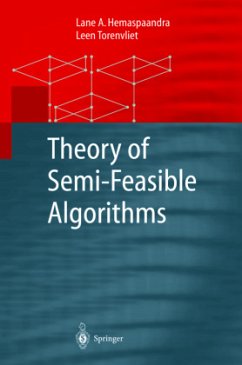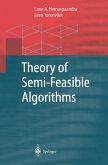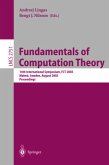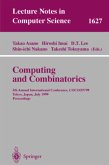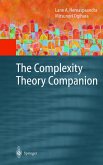This book presents a consolidated survey of the vibrant field of research known as the theory of semi-feasible algorithms. This research stream perfectly showcases the richness of, and contrasts between, the central notions of complexity: running time, nonuniform complexity, lowness, and NP-hardness. Research into semi-feasible computation has already developed a rich set of tools, yet is young enough to have an abundance of fresh, open issues.
Being essentially self-contained, the book requires neither great mathematical maturity nor an extensive background in computational complexity theory or in computer science in general. Newcomers are introduced to the field systematically and guided to the frontiers of current research. Researchers already active in the field will appreciate the book as a valuable source of reference.
An Invitation to the Dance It is an underappreciated fact that sets may have various types of complex ity, and not all types are in harmony with each other. The primary goal of this book is to unify and make more widely accessible a vibrant stream of research-the theory of semi-feasible computation-that perfectly showcases the richness of, and contrasts between, the central types of complexity. The semi-feasible sets, which are most commonly referred to as the P selective sets, are those sets L for which there is a deterministic polynornial time algorithm that, when given as input any two strings of which at least one belongs to L, will output one of them that is in L. The reason we saythat the semi-feasible sets showcase the contrasts among types of complexity is that it is well-known that many semi-feasible sets have no recursive algorithms (thus their time complexitycannot be upper-bounded by standard time-complexity classes), yet all semi-feasible sets are simple in a wide range of other natural senses. In particular, the semi-feasible sets have small circuits, they are in the extended low hierarchy, and they cannot be NP-complete unless P = NP. The semi-feasible sets are fascinating for many reasons. First, as men tioned above, they showcase the fact that mere deterministic time complex ity is not the only potential type of complexity in the world of computation.
Being essentially self-contained, the book requires neither great mathematical maturity nor an extensive background in computational complexity theory or in computer science in general. Newcomers are introduced to the field systematically and guided to the frontiers of current research. Researchers already active in the field will appreciate the book as a valuable source of reference.
An Invitation to the Dance It is an underappreciated fact that sets may have various types of complex ity, and not all types are in harmony with each other. The primary goal of this book is to unify and make more widely accessible a vibrant stream of research-the theory of semi-feasible computation-that perfectly showcases the richness of, and contrasts between, the central types of complexity. The semi-feasible sets, which are most commonly referred to as the P selective sets, are those sets L for which there is a deterministic polynornial time algorithm that, when given as input any two strings of which at least one belongs to L, will output one of them that is in L. The reason we saythat the semi-feasible sets showcase the contrasts among types of complexity is that it is well-known that many semi-feasible sets have no recursive algorithms (thus their time complexitycannot be upper-bounded by standard time-complexity classes), yet all semi-feasible sets are simple in a wide range of other natural senses. In particular, the semi-feasible sets have small circuits, they are in the extended low hierarchy, and they cannot be NP-complete unless P = NP. The semi-feasible sets are fascinating for many reasons. First, as men tioned above, they showcase the fact that mere deterministic time complex ity is not the only potential type of complexity in the world of computation.
From the reviews: "This book focuses mainly on the complexity of P-selective sets ... . a course from this text would require a highly-motivated instructor who can give the intuitive ideas leaving the details to the book. The book would also serve as a reasonable reference for those doing research in this area." (Lance Fortnow, SIGACT News, Vol. 35 (2), 2004)

